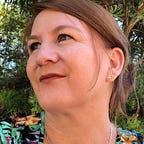The Power of Children’s Books: Reading Them Makes Me a Better Librarian
I take my role as “Keeper of the Great Collection” seriously
“I don’t read children’s books.”
It sounds like a perfectly innocuous statement. After all, plenty of people don’t read for pleasure at all, but I find myself questioning their career choice when the statement comes from another school librarian. If you don’t love your job enough to read the books you select for others, is this the right job for you?
You probably think it’s impossible to read every purchase made for a school library — and you’d be right. As a rough average, I read about 50% of the fiction I purchase for the school library.
Do I need to read this many? The way I run my library — yes. It’s an integral part of how I promote books and increase the reading culture of the school.
More Accurate Book Recommendations
Aside from assessing suitability, making accurate book recommendations is one of the key reasons I read children’s books. I often read the first book in a popular series — this gives me the flavor and feel for the series. If you’ve experienced the agony of reading one Rainbow Magic book after another with your children, you’re probably nodding your head about now.
Making accurate reading recommendations is crucial in my role. I want my students to trust my recommendations. Not all books or genres are created equal. You can’t simply give a recommendation based on the book genre or subject. You need to consider the students' reading age and what piqued their interest in the book.
If you’ve ever received a computer-generated recommendation, you’ll know that sometimes they can miss the mark by a mile.
Is there another book just like this? It’s one of the most common questions I’m asked, and it’s such a broad topic to cover. You need to drill down to find out what attracted the student to the book. It’s one reason why recommending books to read after Harry Potter can be simple and complex. Was the attraction the friendships? The fight between good and evil? The boarding school aspect of the story. The magic?
My book recommendations are always tailored to the individual student asking the question.
Enhance Reading Culture
Going beyond making recommendations that students trust is the ability to talk books with them. Teaching staff push students to read ‘good literature.’ As the Keeper of the Great Collection I know my library and the books within it inside out. I can casually chat about the romance in the Wish series to some students, explore fantasy based on mythology, and debate about the best way to tackle Choose Your Own Adventure books. I chat about the books they want to read — not the books they’re told to read.
Aside from my status as a book nerd, I gain credibility with the students. If they are having a bad day, they can come to the library at lunchtime and chat books. My library is a place where peer groups pressures and playground politics are checked at the door.
Talking about books is a safe topic. By extension, the library becomes a safe place. Often this security leads to students opening up about their problems. Talking on their level makes me an adult who students can trust to share secrets with.
Accuracy in Diversity
Growing up, I read many books, yet something was missing from my reading — a character just like me. When I finally found a character with Cystic Fibrosis, they were shallow and existed as the pity person in the plot. I don’t want that experience for my students. If the story is sacrificed for the teachable moment, it doesn’t make my library shelves.
Wherever possible, I try to purchase books by own voices authors for the library collection. I also read every book with a diverse character. Regardless of if the character has a disability, is culturally diverse, or LGBTQIA+. I look for tropes, ableism, and didactic texts. Where possible, I check for reviews from diverse readers who share the same background as the main character.
I go to these lengths because I want my students to hold a book to their chest in joy because their life has been accurately reflected on the page.
Extend Readers as Much as Possible
My school library caters for students from Kindy to Year Six. By Years Five and Six, books have to compete for attention — mostly with technology. These students have started to figure out what they like to read and what they consider babyish. If left to their own devices, they like to immerse themselves in YA books — but sometimes that they aren’t quite ready for that content.
There is some hypocrisy in that statement. By twelve, I was reading Flowers in the Attic and Stephen King — openly, not under the covers with a torch late at night. In some ways, my reading was innocent, and much of the content went over my head. But today's YA books can be extremely explicit.
I read widely to know which YA books I can add to my collection and which are best left until the students move onto High School. Another bonus is my ability to help parents when they ask for recommendations to extend a confident reader. Some books might not be right for a primary school library collection, but they may be an exact fit for certain readers.
Books and reading are at the heart of everything I do as a school librarian. I want my students to be as enthusiastic about books and reading as I am. I wouldn't be the librarian I am if I didn't read children's books.
Sandi Parsons is an award-winning librarian, children’s author, and a 2020/2021 Book of the Year Award Judge for the Children’s Book Council of Australia (Early Childhood category).
